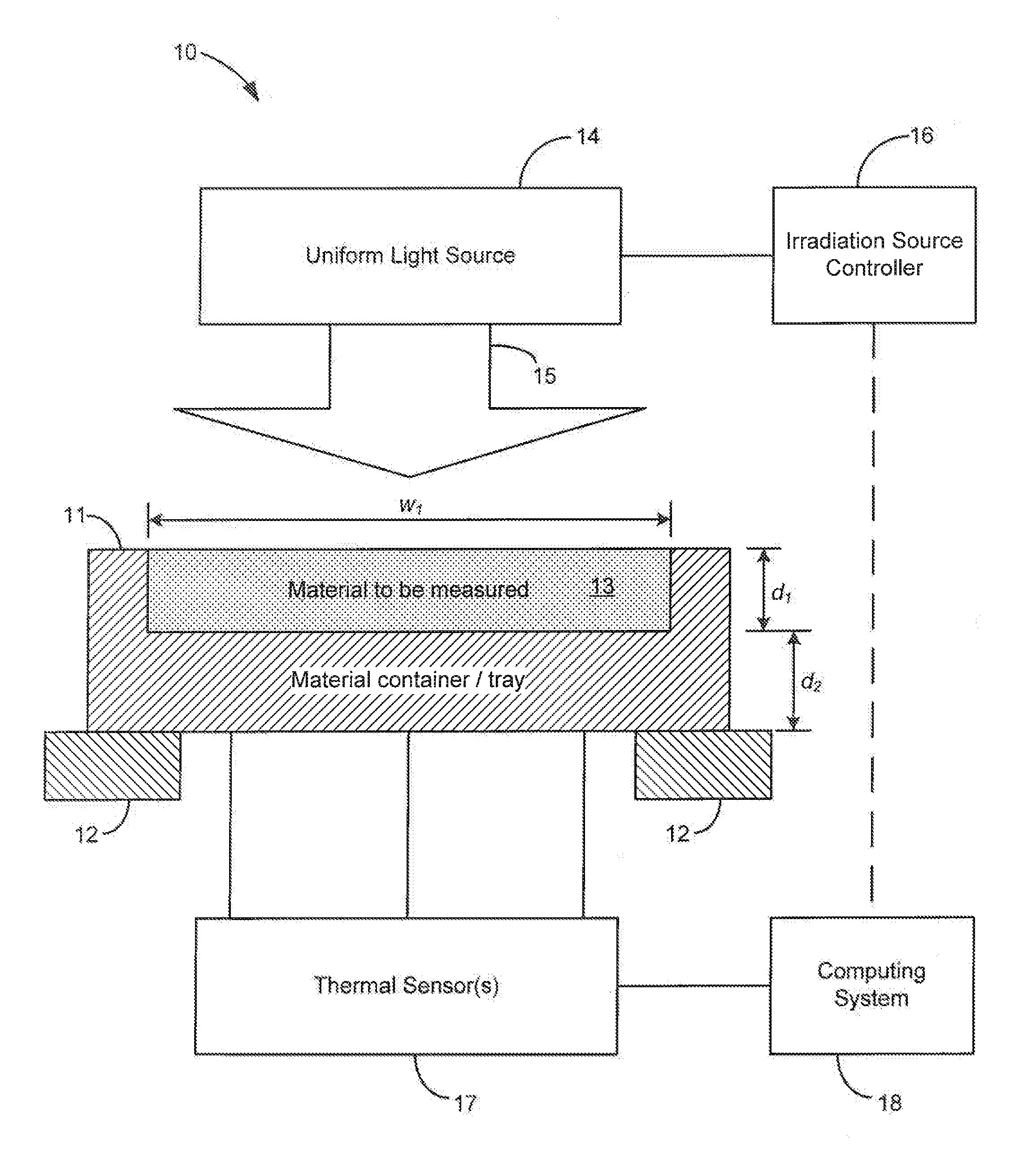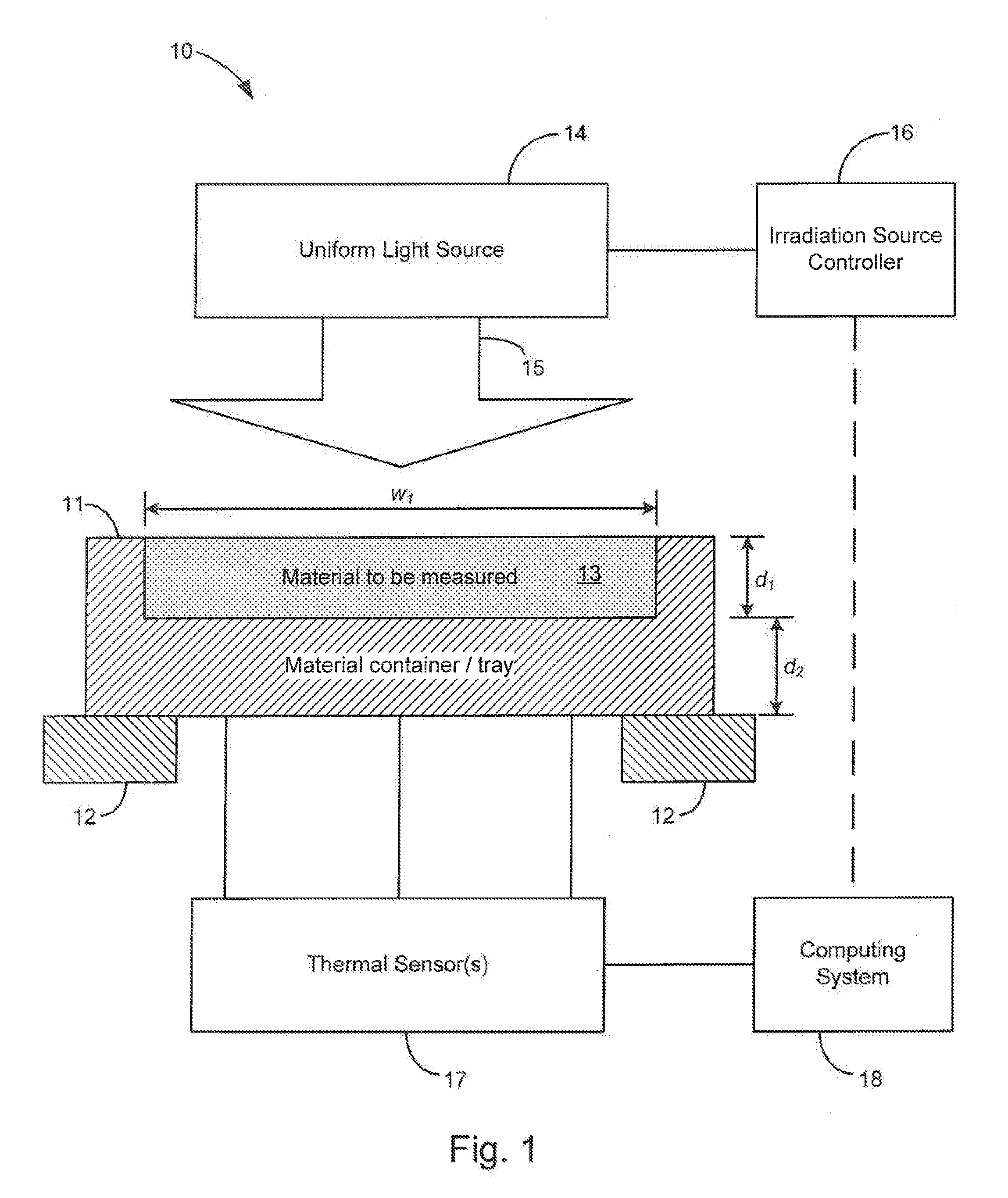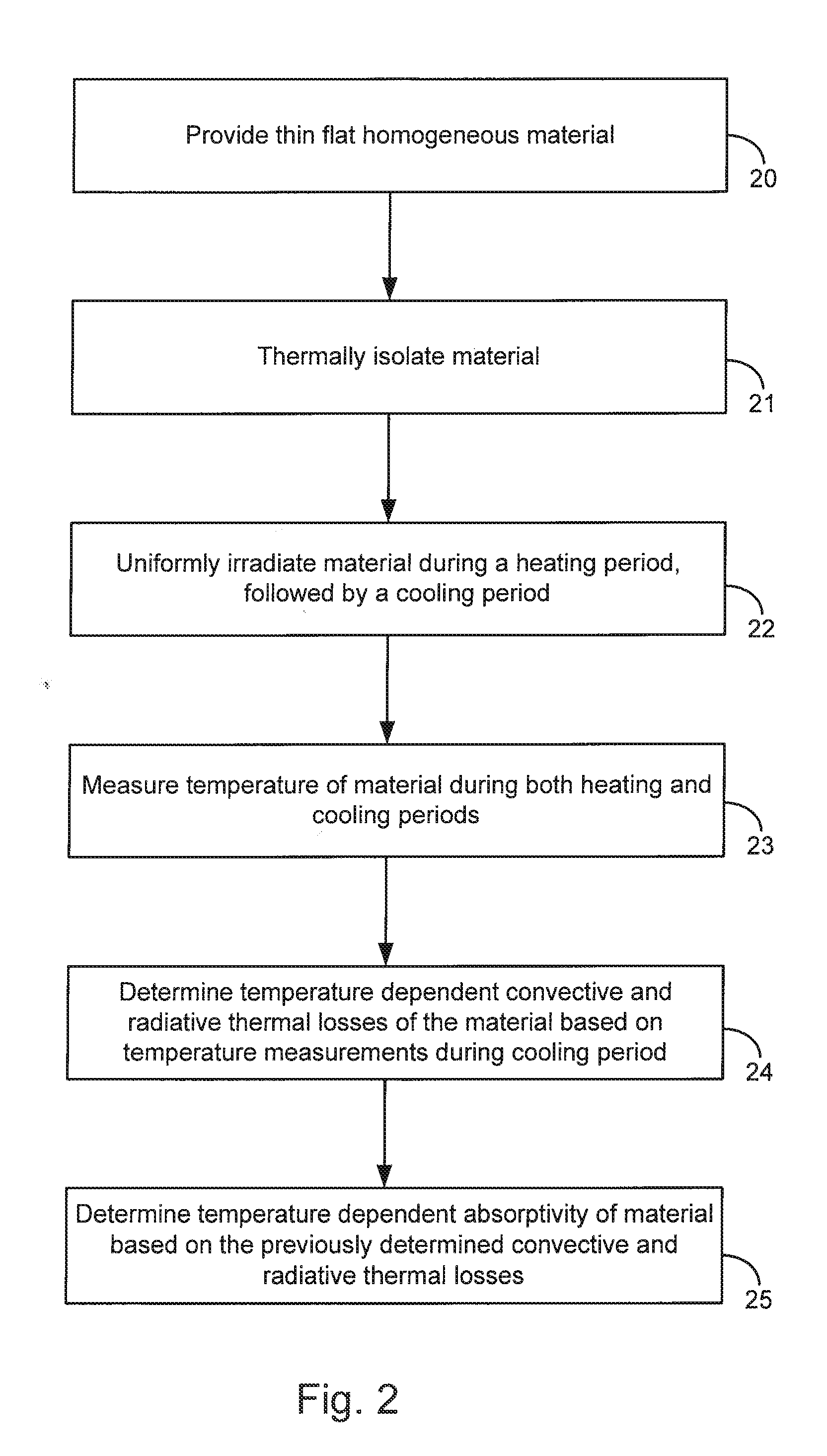System and method for the direct calorimetric measurement of laser absorptivity of materials
a laser absorptivity and calorimetric measurement technology, applied in the direction of calorimeters, instruments, thermal analysis of materials, etc., can solve problems such as reflected light, and achieve the effect of removing the effect of convective and radiative loss
- Summary
- Abstract
- Description
- Claims
- Application Information
AI Technical Summary
Benefits of technology
Problems solved by technology
Method used
Image
Examples
Embodiment Construction
[0013]Turning now to the drawings, FIG. 1 shows an example embodiment of the system for the direct calorimetric measurement of the laser absorptivity of a material of the present invention, generally indicated at 10. The system is shown having a material container or tray 11 having an open cavity for receiving a material to be measured (shown at 13 filling the cavity). The open cavity is shown having a width w1 and a depth d1, and the material container / tray is shown having a thickness d2 between the material to be measured and an outer surface where thermal sensors 17 are shown positioned at various locations to determine temperature and temperature uniformity of the material container / tray. The container is also shown supported by a thermal isolation structure, generally shown at 12. The container 11 and the thermal isolation structure 12 may be characterized together as a material holder adapted to support and thermally isolate the material to be measured. It is appreciated that ...
PUM
 Login to View More
Login to View More Abstract
Description
Claims
Application Information
 Login to View More
Login to View More - R&D
- Intellectual Property
- Life Sciences
- Materials
- Tech Scout
- Unparalleled Data Quality
- Higher Quality Content
- 60% Fewer Hallucinations
Browse by: Latest US Patents, China's latest patents, Technical Efficacy Thesaurus, Application Domain, Technology Topic, Popular Technical Reports.
© 2025 PatSnap. All rights reserved.Legal|Privacy policy|Modern Slavery Act Transparency Statement|Sitemap|About US| Contact US: help@patsnap.com



